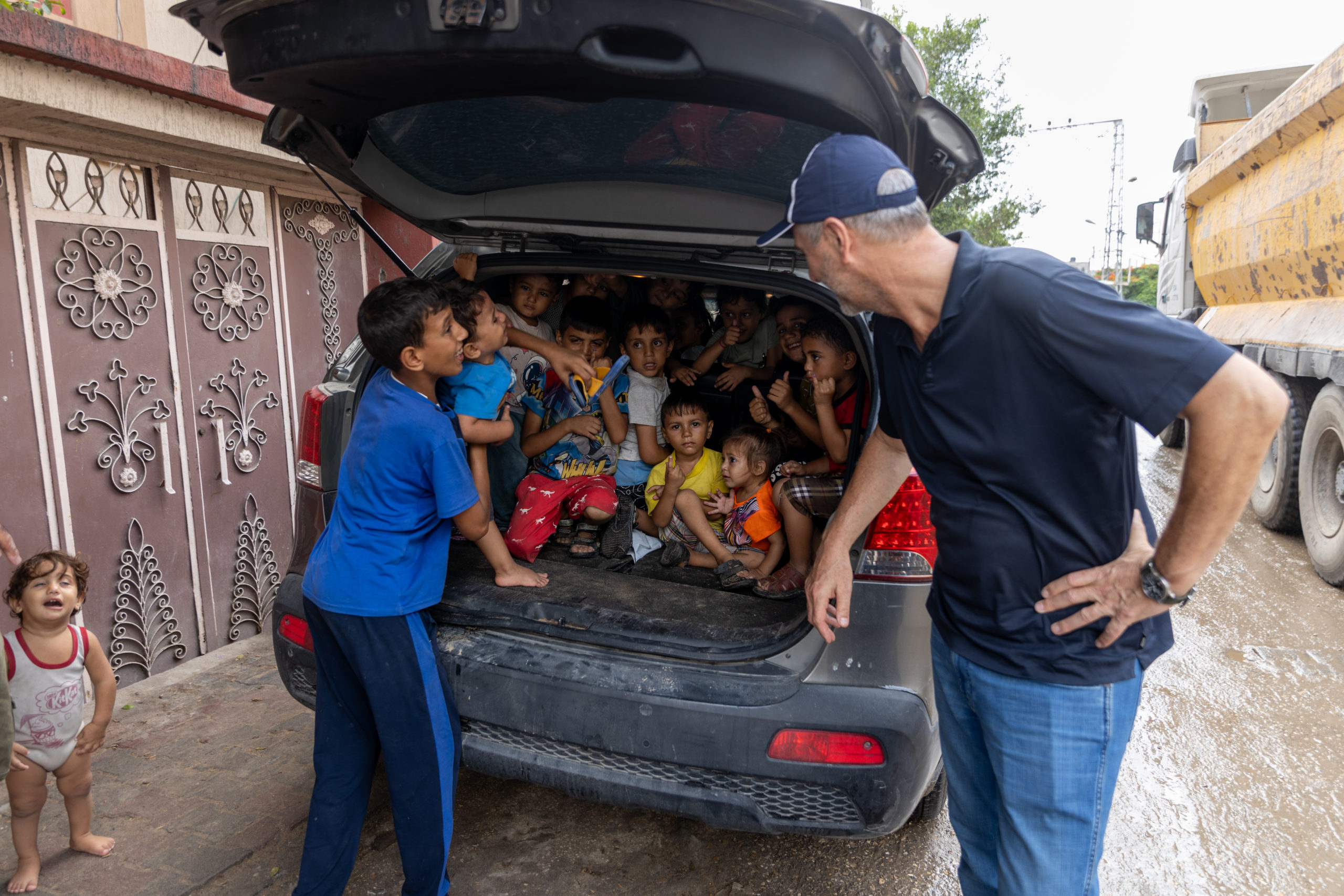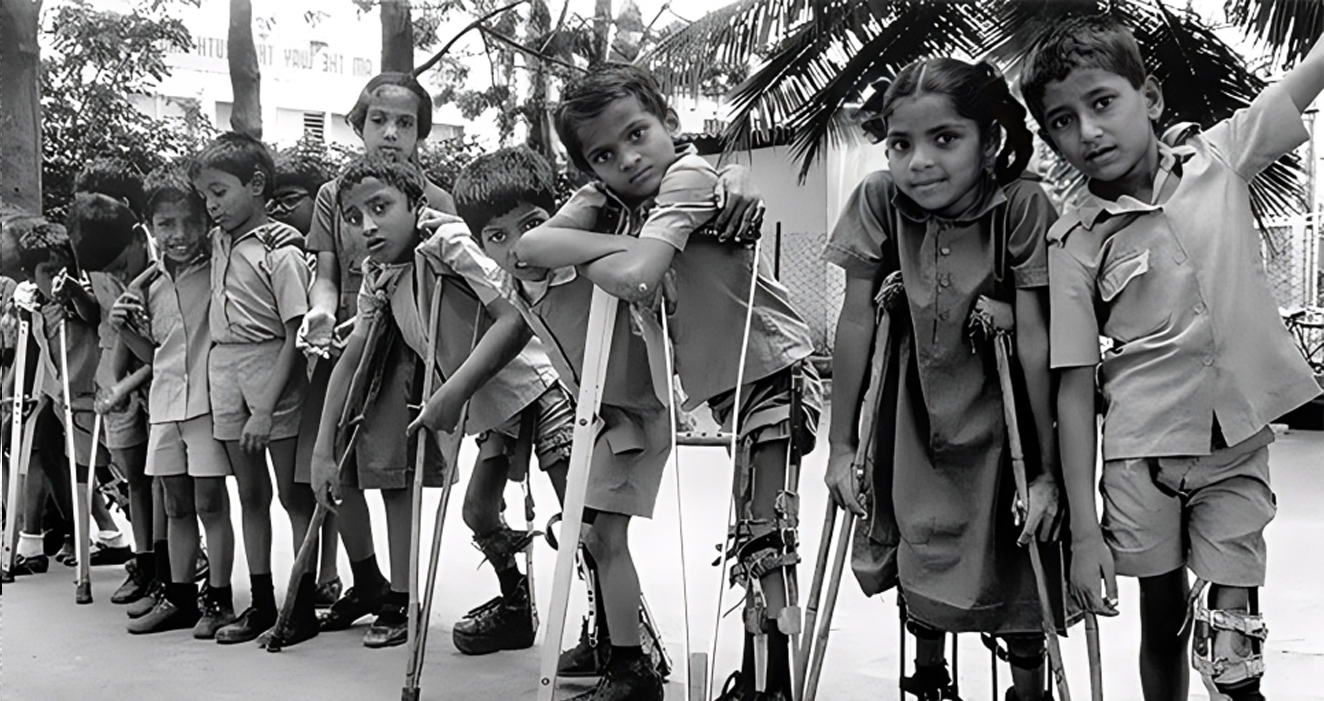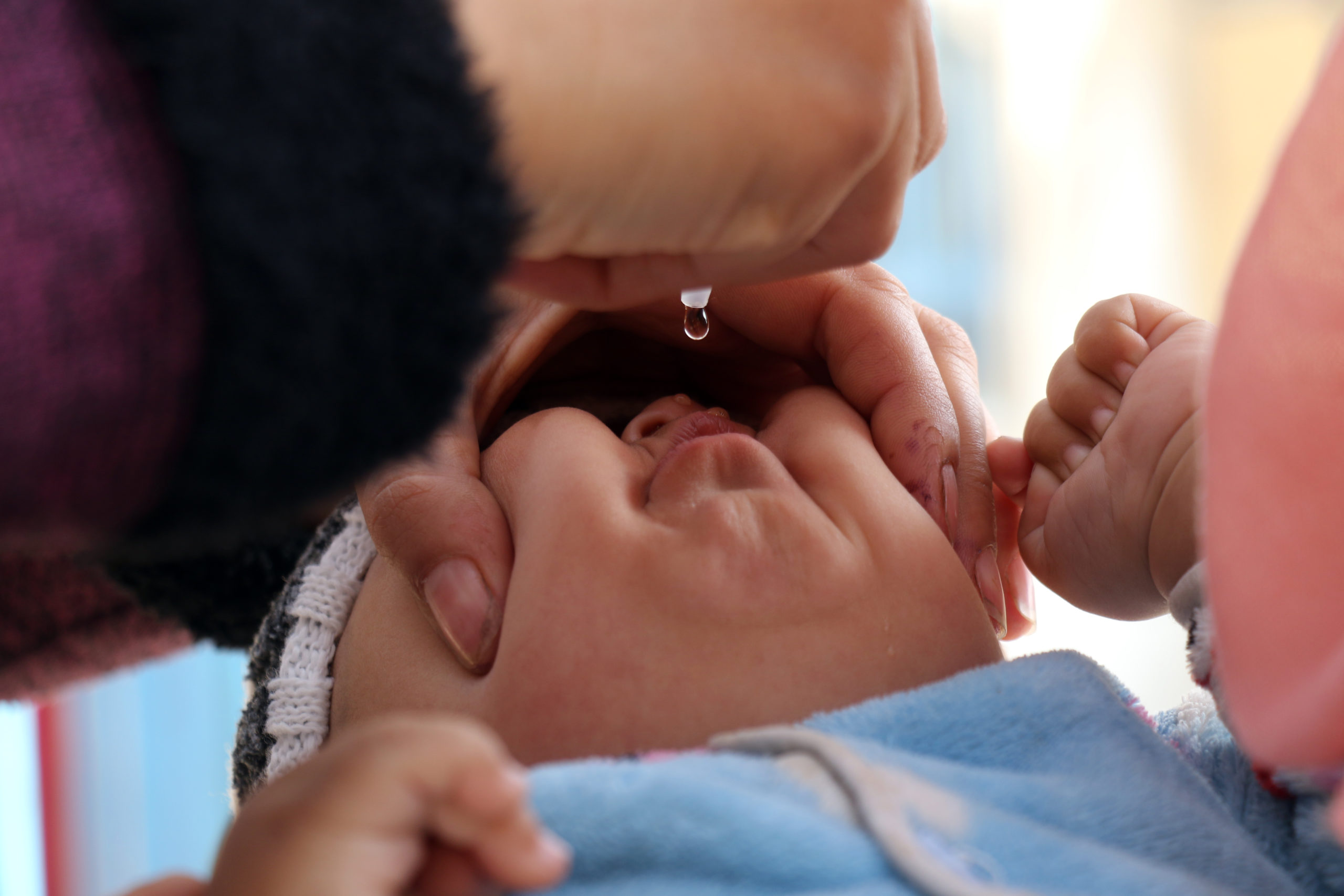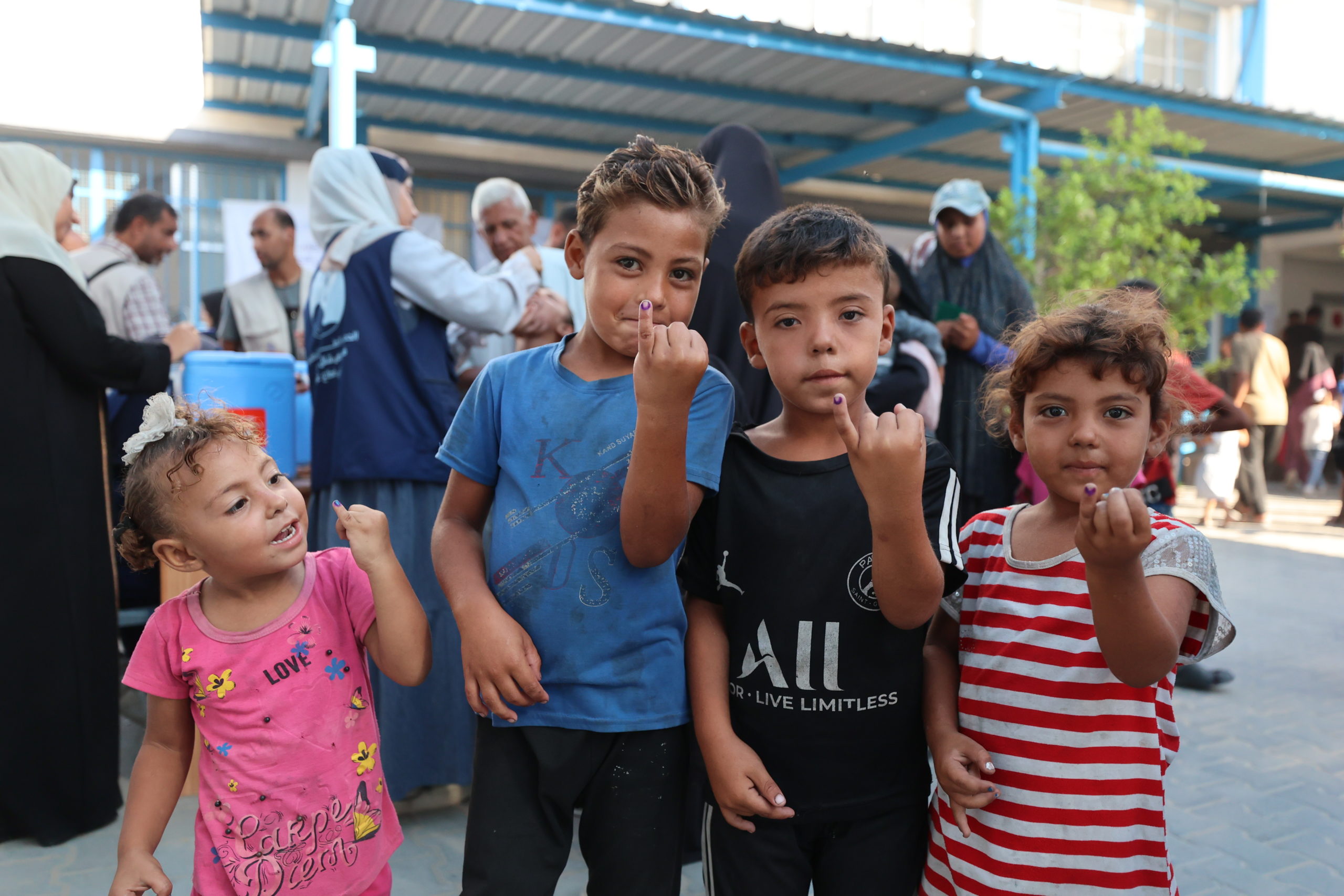As country maintains pressure on the poliovirus through the high season
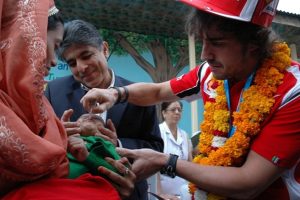
UNICEF/R. Curtis
New Delhi, October 27: “Every child deserves the right to run, to play and to live a healthy life without polio,” Fernando Alonso, two-time world champion Formula 1 Ferrari driver and UNICEF Ambassador, said today during a visit to India, where he visited children affected with paralysis.
Hours after arriving in India for the country’s inaugural F1 event, Alonso drove to the pediatric hospital in East Delhi, where he interacted with children undergoing physiotherapy following paralysis and immunised five infants with oral polio vaccine. “I’m proud to be here today to immunize children against polio,” he said. “It is critical that all Indian children continue to be immunized against polio until this disease has been eradicated all over the world. We all hope that happens soon.”
India has made remarkable progress against polio this year. For the first time in history, India has not reported any case of polio for nine consecutive months.
Government plans for the road ahead
On World Polio Day, 24 October, the Indian Minister of Health and Family Welfare, Ghulam Nabi Azad noted that while the progress this year is remarkable, the risk still persists. “We are close to our goal but are not taking any chances. Efforts will be further intensified in the country to stop any residual poliovirus circulation and also to prevent any polio cases following an international importation,” he observed.
The Government of India Ministry of Health and Family Welfare has put in place an Emergency Preparedness and Response Plan, and all the States in India are preparing their own plan.
Special strategies are being implemented to protect children on the move – those of migrants, nomads, construction sites and brick kiln workers and the families returning to their homes in the endemic states on important festivals such as Holi, Diwali and Chatt. Mobile and transit vaccination teams immunize children at railway stations, inside running trains, at bus stands, market areas, brick kilns, construction sites etc. Around 5 million children are immunized by transit and mobile teams during every round in UP, Bihar and Mumbai alone.
A new communication campaign personalizing the message for polio immunization from ‘Har bachcha har bar’ (every child every time) to ‘Mera bachcha har bar’ (my child every time) has been rolled out. The new campaign encourages all parents to take action to protect their children against polio.
And in a further measure to help inspire the population to maintain their commitment to polio eradication, social mobilization activities were scaled up during the festival season. As thousands of people travelled from one part of the country to another to celebrate Shravani Mela or Eid, their route was lined with polio eradication messages. Messages were plastered on taxis, rickshaws and over entry points, polio eradication branded umbrellas were handed out, and ‘the voice of eradication’ could be heard, telling parents to vaccinate their children.
One of the festival-goers, Pradip from Kishanganj, said of the campaign, “I have a daughter of 2 years old and I have made sure to get her vaccinated during the polio rounds. These activities on the entire stretch act as a good reminder to all the young parents to get their children vaccinated against polio.”
Rotary ensures children at construction sites are vaccinated
Knowing that polio finds vulnerable children, the Government of India has made special efforts to reach those communities which are remote, poor or migratory. Migrant children often miss out on vaccination as their families are frequently on the move.
In the national capital Delhi, building development sites where many migrant labourers work have been mapped and tracked for polio immunization, so that children can be vaccinated at construction sites during immunization activities.
Rotary in India recently collaborated with real estate giant DLF to reach such children with vaccine. In the sub-National Immunization day (SNID) held in Delhi on 25 September , 2011, DLF provided access to seven of their development sites in Gurgaon and New Gurgaon. With assistance from site managers, children at the sites were identified and immunized by polio health workers.
